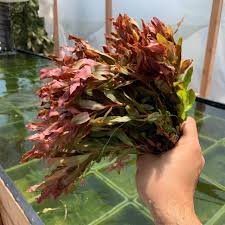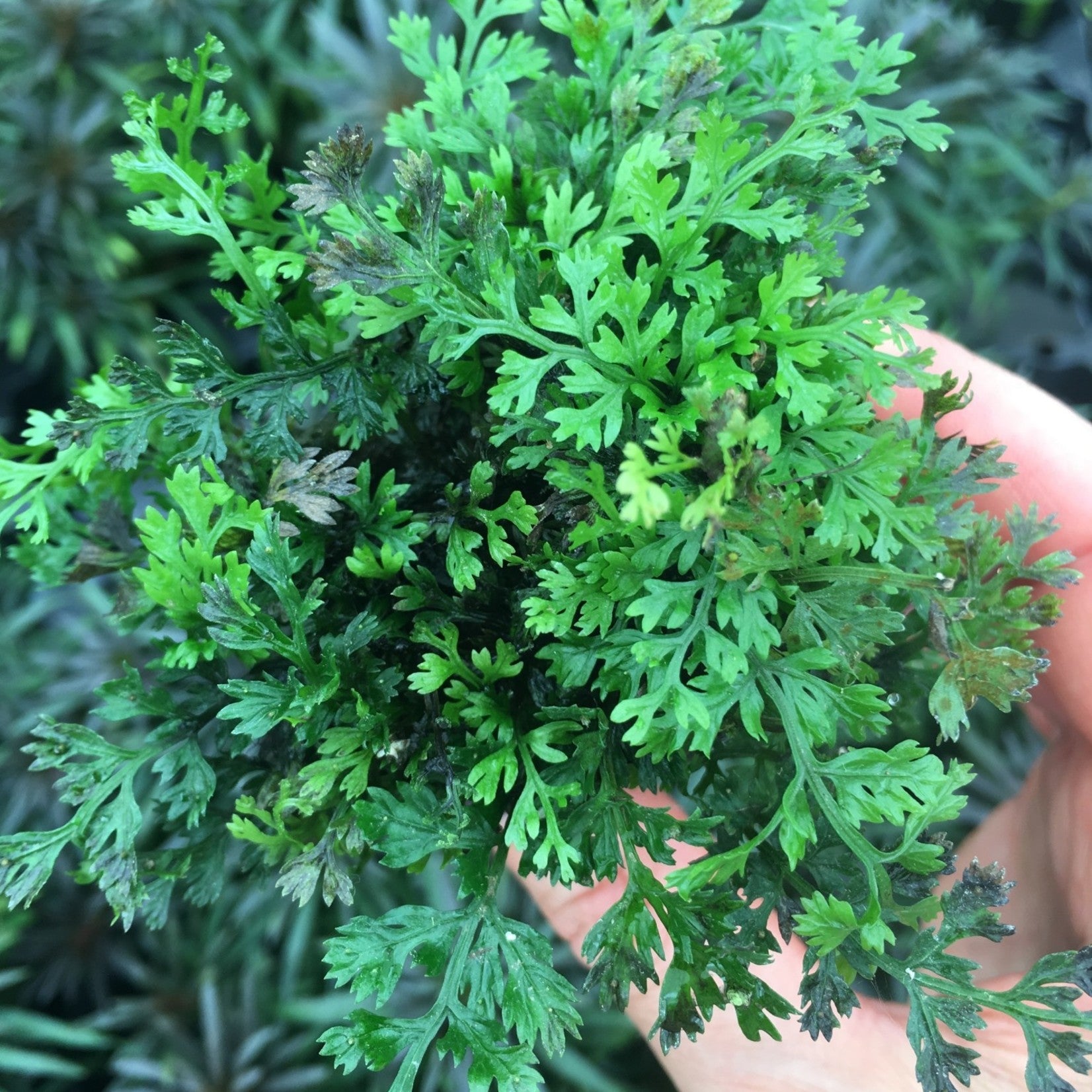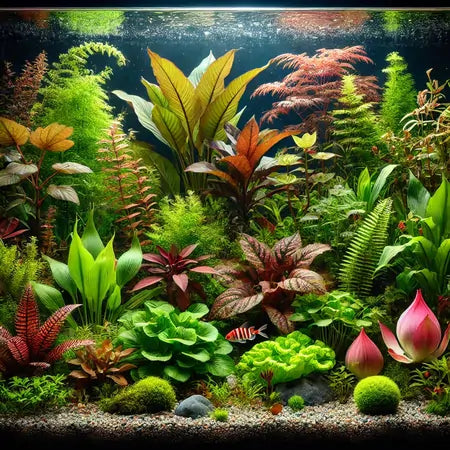Trending searches
$0

By Canton Aquatics │ , Jan 4, 2024 │ Willow Moss: Aquarium Essentials
Willow moss, scientifically known as Fontinalis antipyretica, is a freshwater aquatic plant belonging to the family Fontinalaceae. It's a perennial moss that thrives in temperate regions, predominantly found in Europe and North America. Willow moss is commonly located in streams, rivers, ponds, and lakes, often attached to submerged rocks, logs, or other hard surfaces in the water.

Botanical Profile:
Scientific Name: Fontinalis antipyretica
Common Name: Willow Moss, Greater Water Moss, Common Water Moss, Antifever Fontinalis Moss
Family Name: Fontinalaceae
Habitat: Cool, Freshwater Streams, Rivers, Ponds
Temperature Range: 59°F to 82°F (15°C to 28°C)
Maximum Height: Up to 24 inches (61 cm) in ideal conditions
pH Range: 5.5 to 7.5
Lighting Requirement: Medium
In the realm of scientific classification, willow moss falls under the Bryophyta division, the same as other mosses. This division is characterized by non-vascular plants, which means they lack the complex conducting tissues found in vascular plants. This trait dictates much of their growth patterns and habitat preferences.
When compared to other popular aquarium mosses like Java moss (Taxiphyllum barbieri) and Christmas moss (Vesicularia montagnei), willow moss distinguishes itself in several ways. Unlike the hardier Java moss, willow moss tends to prefer cooler water temperatures and more stable water conditions. Its aesthetic appeal lies in its delicate, feathery fronds, offering a finer texture than the relatively robust fronds of Java moss. Christmas moss, on the other hand, has a more pronounced triangular shape, which differs from the softer, drooping fronds of willow moss.
Physical Characteristics of Willow Moss
Advantages of Willow Moss in Aquaria
Visual Impact on Tank Sizes and Shapes
Ease of Cultivation
Willow moss is renowned for its RESILIENCE AND ADAPTABILITY, making it a favored choice for both novice and experienced aquarists.
Resilience to Different Water Parameters
Willow moss is tolerant of a wide range of water conditions, from soft to moderately hard water, and pH values ranging from slightly acidic to neutral. This adaptability makes it suitable for diverse aquatic environments.
It thrives in cooler water temperatures, which is beneficial in tanks without heaters. However, it also adapts to the warmer waters of tropical aquariums, albeit with potentially slower growth.
Comparison with Other Aquarium Plants
Unlike some more demanding aquatic plants, willow moss does not require high-intensity lighting or CO2 supplementation, although these can enhance its growth and vibrancy.
It is more forgiving than many plants if water conditions fluctuate, making it a good choice for beginners or for tanks where maintaining stable conditions is challenging.
Benefits to Water Quality
Willow moss plays a critical role in MAINTAINING WATER QUALITY in aquariums.
Role in Nutrient Cycling
Impact on Algae Control and Oxygenation
By competing with algae for nutrients, willow moss can help limit the growth of certain types of algae, contributing to a cleaner and more aesthetically pleasing tank.
As a photosynthetic organism, it releases oxygen into the water, enhancing the oxygenation, which is vital for the health of fish and other aquatic creatures.
Willow moss contributes significantly to the ECOLOGICAL BALANCE of aquariums.
Contribution to the Aquarium's Ecosystem
Interaction with Aquatic Life
FISH, especially fry and smaller species, use willow moss as a shelter and hiding place, which can be crucial for their survival and stress reduction.
In SHRIMP TANKS, willow moss is invaluable. Shrimp feed on the microorganisms that live within the moss, and it also offers an excellent breeding and foraging ground.
IN-DEPTH CARE GUIDE FOR WILLOW MOSS
Choosing the Best Specimens
Look for willow moss with VIBRANT GREEN COLOR AND HEALTHY, INTACT FRONDS. Avoid plants with brown or yellow patches, as these may indicate poor health or aging. Examine for signs of pests like snails or unwanted algae. A magnifying glass can help spot tiny hitchhikers.
Quarantine Procedures
Step 1: Set Up a Quarantine Tank:
Step 2: Introduce Willow Moss to Quarantine:
Step 3: Monitor Water Parameters:
Step 4: Observation Period:
Step 5: Pest and Disease Inspection:
Step 6: Treatment if Necessary:
Step 7: Regular Water Changes:
Step 8: Gradual Introduction to Main Aquarium:
Optimal Planting Techniques
Creative Aquascaping Ideas
Use willow moss to create a lush carpet on the aquarium floor or a verdant backdrop along the back glass. Attach it to driftwood or rocks to create a 'tree' or 'forest' effect. Experiment with different shapes and layouts for unique visual impacts.
Lighting and Water Parameter Requirements:
|
Lighting Needs: · Willow moss thrives under moderate lighting. Aim for 10-12 hours of light per day. · Avoid intense lighting, as this can promote algae growth on the moss. Adjustable LED lights are ideal for controlling intensity. |
|
Water Chemistry Preferences: · Ideal temperature range: 22-28°C (72-82°F). Willow moss can tolerate cooler temperatures but may grow more slowly. · Preferred pH range is 6.0 to 7.5, with soft to moderately hard water. · Regular water changes help maintain optimal conditions and nutrient levels. |
Advanced Maintenance Tips
Proper care and maintenance of willow moss can greatly enhance your aquarium's aesthetic appeal and ecological balance. By following these guidelines, you can ensure that your willow moss remains a vibrant and healthy part of your aquatic ecosystem.
ESSENTIAL TOOLS AND ACCESSORIES FOR WILLOW MOSS CARE
Lighting Equipment
Recommendations for Different Tank Setups:
Lighting Schedules and Intensity Adjustments:
Water Quality Management
Best Practices for Testing and Adjusting Water Parameters:
Using Water Conditioners and Supplements:
Aquascaping and Maintenance Tools
Essential Tools for Planting and Upkeep of Willow Moss:
Tips for Efficient and Safe Aquascaping Practices:
When attaching moss to driftwood or rocks, ensure that it's secure but not overly compressed. The moss needs room to grow and breathe.
Regularly trim the moss to maintain its shape and health. This also prevents it from overshadowing other plants or encroaching on their space.
Nutrition and Supplements
Guide to Fertilizers and CO2 Supplementation:
Balancing Nutrients Without Promoting Algae:
OVER-FERTILIZING CAN LEAD TO ALGAE OUTBREAKS. It’s vital to find a balance, providing enough nutrients for plant growth but not so much that algae thrive.
Observe the health of your plants and adjust fertilization accordingly. If algae become an issue, reduce fertilizer use and consider increasing water changes or enhancing filtration.
Incorporating willow moss into your aquatic design with the right tools and practices ensures a healthy, thriving aquatic environment. By carefully managing lighting, water quality, and nutrients, you create not only an aesthetically pleasing aquarium but also a balanced ecosystem that supports the growth and well-being of all its inhabitants.
INTEGRATING WILLOW MOSS INTO YOUR AQUATIC DESIGN
Design Ideas for Different Tank Sizes
Using Willow Moss as Focal Points and Background Plantings
Companion Plants and Animals
Ideal Plant Pairings:
Combine willow moss with other low-maintenance plants like Anubias or Java fern for a balanced look. Their broader leaves contrast well with the fine texture of the moss.
For a color contrast, include plants with red or purple hues, such as Ludwigia repens or Alternanthera reineckii.
Fish and Invertebrate Companions:
SMALL, PEACEFUL FISH like tetras, rasboras, and guppies complement willow moss environments. They often use the moss as shelter or foraging grounds.
SHRIMP, especially cherry or crystal shrimp, thrive with willow moss, as it provides both a food source and a hiding place. Similarly, snails can help keep the moss clean by feeding on detritus trapped in it.
Creating a Harmonious and Balanced Ecosystem:
Integrating willow moss into your aquarium opens up a world of creative possibilities, enhancing the aesthetic appeal and ecological balance of your aquatic environment. Whether used as a delicate carpet in a nano tank, a textured midground in a medium-sized setup, or as a dramatic backdrop in a large aquarium, willow moss brings life and beauty to any aquatic landscape. Alongside compatible plants and animals, it helps create a diverse, thriving ecosystem.
Willow moss's versatility and ease of care make it an excellent choice for aquarists of all levels. By embracing the unique qualities of this plant, you can transform your aquarium into a vibrant underwater haven. Let the exploration of willow moss lead you to a more enriching and fulfilling aquascaping journey, creating not just an aquarium, but a living work of art.
FAQs:
Can willow moss grow in any type of aquarium?
Yes, willow moss is highly adaptable and suitable for most freshwater aquariums.
How fast does willow moss grow?
Its growth rate varies but is generally slow to moderate.
Do fish like willow moss?
Many fish species enjoy the shelter and breeding grounds provided by willow moss, making it a popular choice in diverse aquarium setups.
Thank you for exploring the wonderful world of willow moss with us! We hope this guide has sparked your interest and equipped you with the knowledge to enhance your aquarium with this beautiful plant.
Get Involved:
Step 1: Share Your Experience: Have you tried incorporating willow moss in your aquarium? We’d love to see your setups! Share your photos and stories in the comments section below or tag us on social media with #MyWillowMossAquarium.
Step 2: Ask Questions: If you have any questions or need advice about willow moss, feel free to ask in the comments. Our community of aquatic enthusiasts is here to help!
Step 3: Subscribe for More: Don’t forget to subscribe to our newsletter for more guides, tips, and updates on the fascinating world of aquascaping.
Join the Community: Follow us on social media! Stay connected with us on our Facebook page: www.facebook.com/cantonaquatic for daily inspiration, latest trends, and community highlights.
What else would you like to learn about? Let us know your topic suggestions for future blog articles.
Spread the Love!
Share This Guide: If you found this guide helpful, please share it with your friends and fellow aquarists. Let’s spread the knowledge and joy of aquascaping!
By being a part of our community, you’re not just building an aquarium; you’re creating an underwater masterpiece. Let’s continue to grow and learn together!
Remember, every aquatic journey starts with a single plant. Let willow moss be the beginning of yours. Happy aquascaping!
If you’re looking to purchase aquatic plants, you’ll want to know about Canton Aquatics. Visit our official website. https://www.cantonaquatics.com/



Check out our shop for a variety of fresh, farm-grown plants! Find the perfect options to enhance your aquarium today.
!